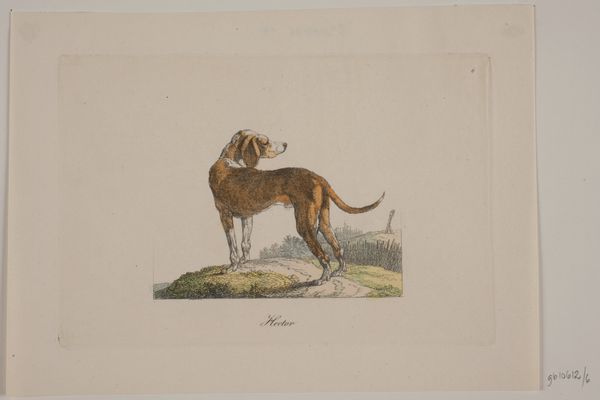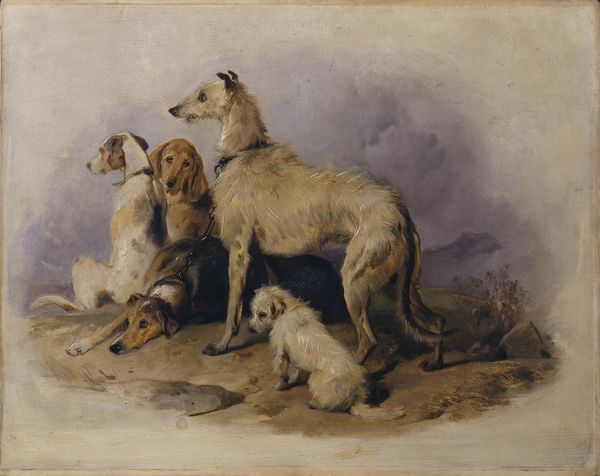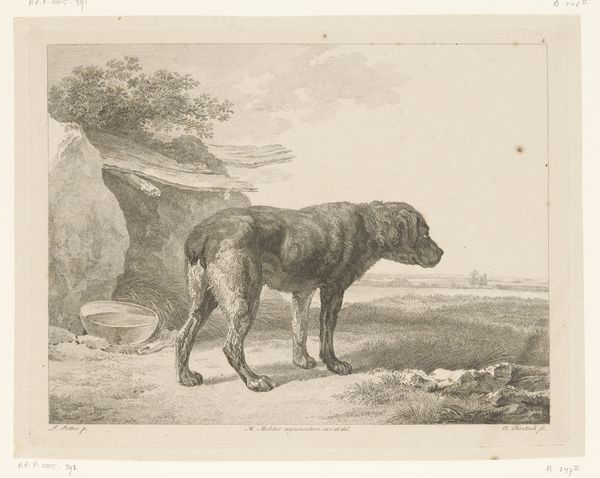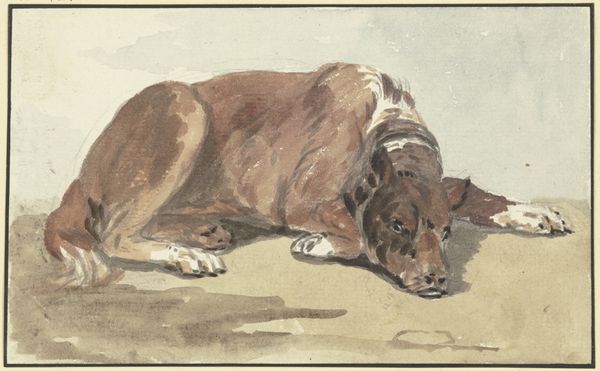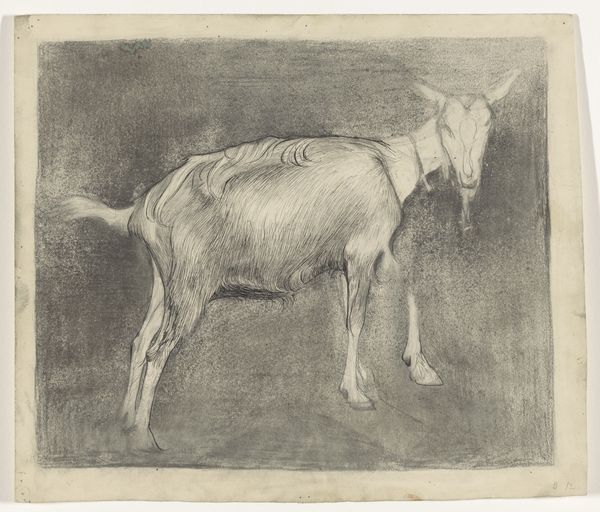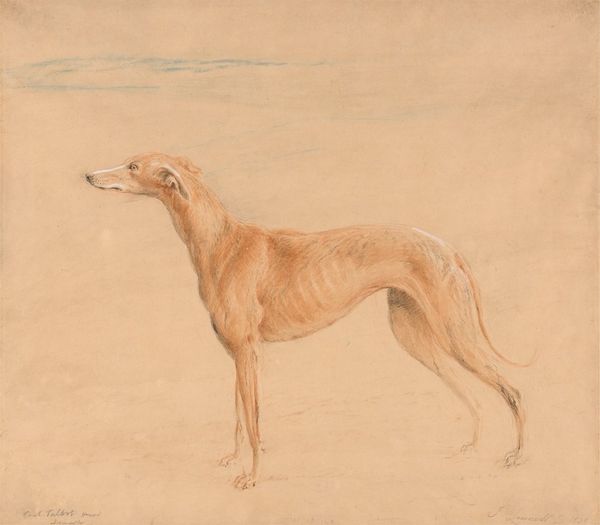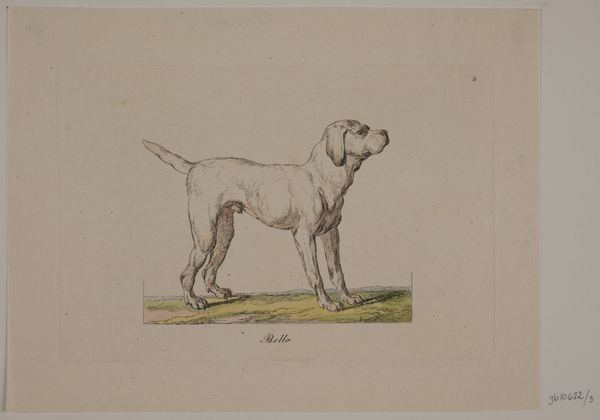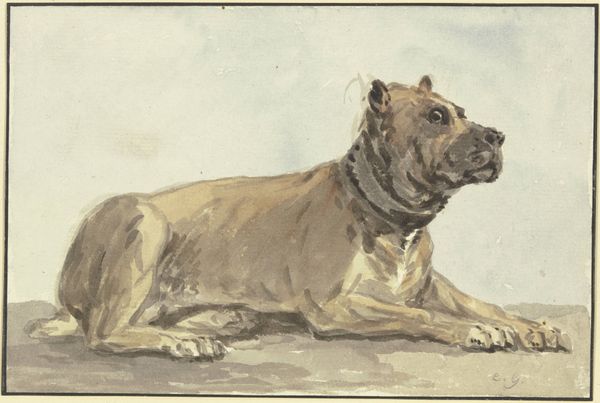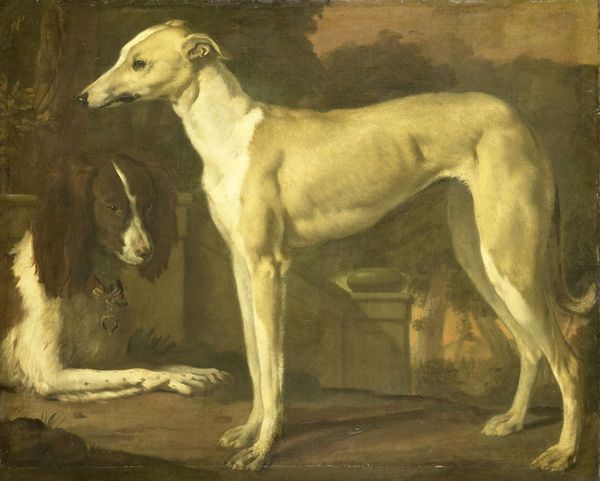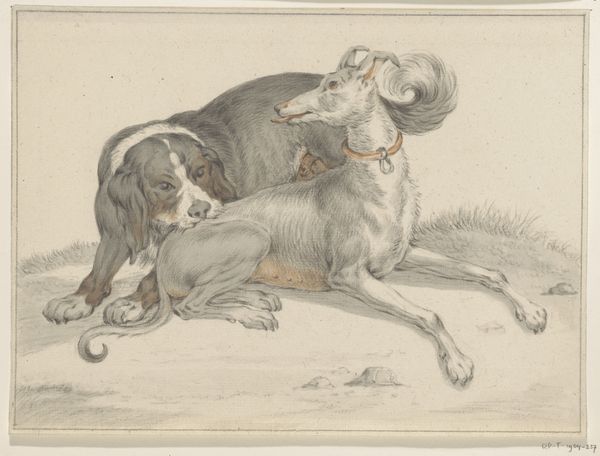
oil-paint
#
animal
#
oil-paint
#
dog
#
landscape
#
figuration
#
oil painting
#
romanticism
#
watercolor
#
realism
Dimensions: 12 1/16 × 16 1/16 in. (30.6 × 40.8 cm)
Copyright: Public Domain
Curator: Here we have Edwin Landseer’s "A Deerhound," painted around 1826. The piece is oil on canvas and currently resides here at the Metropolitan Museum of Art. Editor: Immediately, I’m struck by the textures. The short, choppy strokes in the foreground contrast so interestingly with the smoother areas of the dog itself. It's almost tactile. Curator: Absolutely. Landseer, particularly in his depictions of animals, achieved a level of fame and influence rarely seen. His works were exhibited at the Royal Academy and were immensely popular with the public. Think about the societal context; dog breeding became fashionable, a status symbol, making paintings like these very appealing. Editor: Yes, and considering that appeal, the texture, to me, is key. It gives the dog a very solid, material presence, pulling it out of the picturesque landscape and into a world of very real ownership and breeding. Look at the visible brushwork around the legs—so immediate! It reminds us of the labor involved, both in painting and in the dog's upkeep. Curator: Good point. Landseer’s dogs often became symbols of Victorian virtues, like loyalty and courage. Deerhounds, specifically, were associated with the Scottish Highlands, further associating the upper classes who owned such dogs with ideas of nobility and history. These are representations of status, certainly. Editor: I think the material aspect enhances that aristocratic connection. The well-defined form, set against a looser background—it's as if the value isn't just in the animal, but in the display of material skill that only someone of means could afford to commission and that skilled laborers can materialize. It underscores the wealth behind the painting's production as much as the dog's pedigree. Curator: An interesting observation. It showcases how a simple portrait encapsulates a whole tapestry of social, cultural, and political significance during that period. Editor: And it grounds what might seem a sentimental dog portrait in the concrete realities of Victorian materialism and production. Curator: I'll certainly think about the labor involved when I look at a Landseer painting from now on. Editor: Exactly. There's so much beneath the surface. It gives us insight to how the art market worked then.
Comments
No comments
Be the first to comment and join the conversation on the ultimate creative platform.

